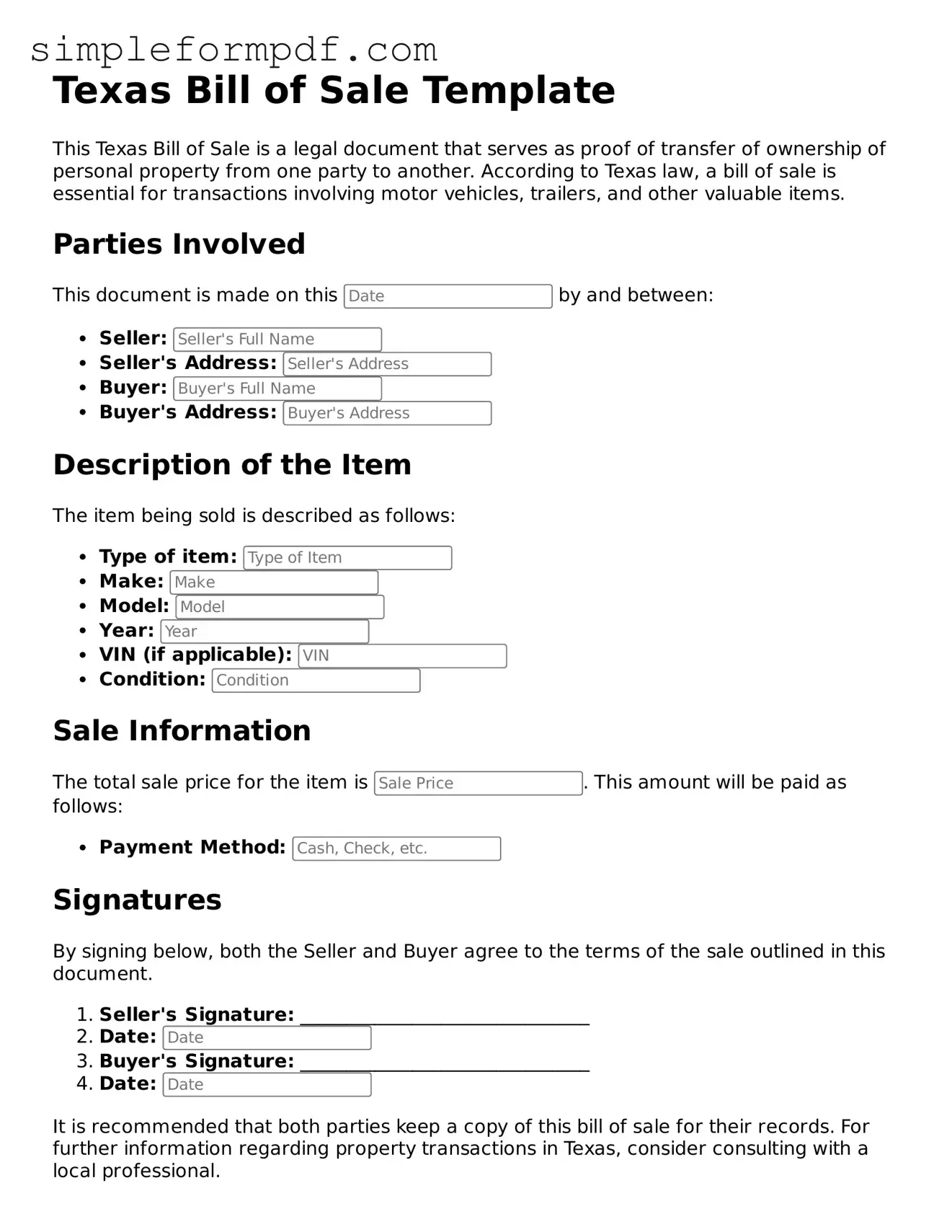Free Bill of Sale Form for the State of Texas
The Texas Bill of Sale form is a legal document that facilitates the transfer of ownership of personal property from one party to another. This form serves as proof of the transaction, detailing the items sold and the agreed-upon price. Understanding how to properly fill out this form is essential for both buyers and sellers to ensure a smooth transfer of ownership.
Ready to complete your Texas Bill of Sale? Click the button below to get started!
Launch Editor
